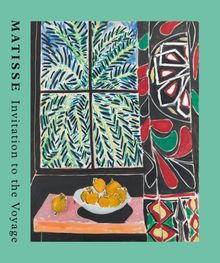ARTIST MONOGRAPHS
|
|
in stock $75.00 Free Shipping UPS GROUND IN THE CONTINENTAL U.S. |
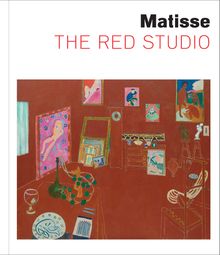 Matisse: The Red Studio
Matisse: The Red Studio
Published by The Museum of Modern Art, New York.
By Ann Temkin, Dorthe Aagesen.
Created in 1911, Henri Matisse’s The Red Studio would go on to become one of the most influential works in the history of modern art. The painting, which has hung in MoMA’s galleries since 1949, depicts the artist’s studio in the Parisian suburb of Issy-les-Moulineaux, filled with his own artworks, furniture and decorative objects. Matisse’s radical decision to saturate the work’s surface with red has fascinated generations of scholars and artists, yet much remained to be discovered about the painting’s genesis and history.
Published in conjunction with an exhibition that reunites the artworks shown in The Red Studio for the first time since they left Matisse’s work space, this copiously illustrated catalog examines the paintings and sculptures depicted in it, from familiar works such as Young Sailor II (1906) to lesser-known pieces whose locations have only recently been discovered. A narrative essay by Ann Temkin, the Marie-Josée and Henry Kravis Chief Curator of Painting and Sculpture at the Museum of Modern Art, New York, and Dorthe Aagesen, Chief Curator and Senior Researcher at Statens Museum for Kunst, Copenhagen, traces the life of The Red Studio, from the initial commissioning of the work in 1911 through its early history of exhibition and ownership to its arrival at MoMA after World War II. The book features a rich selection of archival materials, including photographs, letters and ephemera, many of which have never before been published or exhibited. With its groundbreaking research and close reading of the work, Matisse: The Red Studio transforms our understanding of this landmark of 20th-century art.
PUBLISHER
The Museum of Modern Art, New York
BOOK FORMAT
Hardcover, 9 x 10.5 in. / 224 pgs / 200 color.
PUBLISHING STATUS
Pub Date 5/31/2022
Active
DISTRIBUTION
D.A.P. Exclusive
Catalog: SPRING 2022 p. 3
PRODUCT DETAILS
ISBN 9781633451322 TRADE
List Price: $55.00 CAD $75.00
AVAILABILITY
In stock
in stock $55.00 Free Shipping UPS GROUND IN THE CONTINENTAL U.S. |
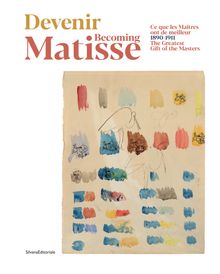 Becoming Matisse
Becoming Matisse
The Greatest Gift of the Masters: 1890–1911
Published by Silvana Editoriale.
Edited by Patrice Deparpe.
To mark the 150th anniversary of the birth of Henri Matisse (1869-1954), the museum founded by the artist in his hometown of Le Cateau-Cambrésis in 1952 pays tribute to a native son.
This catalog sheds light on the first 20 years of Matisse’s career, a period never before revealed so completely, from the early works after his discovery of painting in 1890 and his years of academic training all the way to his own school in Paris, where he taught until 1911.
Focusing on these formative years of crucial importance for his identity, Becoming Matisse reveals how he became a painter and dissects the creative process of a man who copied the great masters of the past, drawing both on them and on his contemporaries in order to turn all the rules upside down and establish his position alongside those whose works he contemplated.
The catalog presents exemplary works made available by unprecedented loans from the Matisse family and international cultural institutions, as well as essays by experts on Matisse.
PUBLISHER
Silvana Editoriale
BOOK FORMAT
Paperback, 9.5 x 11.75 in. / 368 pgs / 400 color.
PUBLISHING STATUS
Pub Date 10/6/2020
Active
DISTRIBUTION
D.A.P. Exclusive
Catalog: FALL 2020 p. 129
PRODUCT DETAILS
ISBN 9788836644186 TRADE
List Price: $45.00 CAD $63.00
AVAILABILITY
In stock
in stock $45.00 Free Shipping UPS GROUND IN THE CONTINENTAL U.S. |
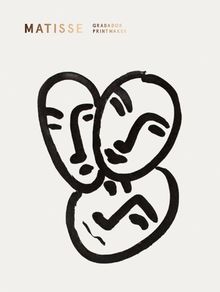 Matisse: Printmaker
Matisse: Printmaker
Published by La Fábrica.
Text by Jay McKean Fisher.
Henri Matisse (1869–1954) is universally known for his iconic paintings, the centerpieces of museum collections throughout the world. However, somewhat less well known is his work as printmaker and engraver between the years 1900 and 1954, the year of his death. His engraving work encompasses more than 800 pieces that comprise a gigantic visual library, offering a complete document about his working process and his way of transforming his visual material into art.
This striking hardcover book with a metallic stamped cover includes 63 of the French master's engravings done throughout his life that track alongside the subjects and interests that made their way into his work as his style developed. These subjects, overwhelmingly women, included classical nudes, women dressed in North African costume, portraits and a print version of Matisse's celebrated mural for the Barnes Foundation, The Dance.
PUBLISHER
La Fábrica
BOOK FORMAT
Hardcover, 6.5 x 8.5 in. / 144 pgs / 9 color / 60 bw.
PUBLISHING STATUS
Pub Date 1/21/2020
Out of print
DISTRIBUTION
D.A.P. Exclusive
Catalog: SPRING 2020 p. 146
PRODUCT DETAILS
ISBN 9788417769147 TRADE
List Price: $35.00 CAD $49.00 GBP £30.00
AVAILABILITY
Not available
STATUS: Out of print | 00/00/00 For assistance locating a copy, please see our list of recommended out of print specialists |
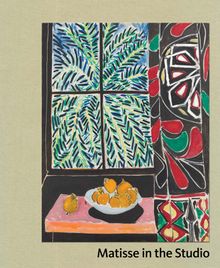 Matisse in the Studio
Matisse in the Studio
Published by MFA Publications, Museum of Fine Arts, Boston.
Edited by Ellen McBreen, Helen Burnham. Text by Suzanne Preston Blier, Ann Dumas, Jack Flam, Claudine Grammont, Hélène Ivanoff, Marie-Thérèse Pulvenis de Seligny.
This book is the first in English to explore the essential role that Henri Matisse’s personal collection of objects played in his studio practice. The artist traveled with his collection even to temporary residences, and letters to family members often included requests for objects to be moved to where he was working, revealing them to be critical creative stimulants. Featured frequently in the modern master’s bold paintings, drawings and cutouts, and influencing the development of his work in sculpture, Matisse’s objects formed a secret history hiding in plain sight.
Works that span Matisse’s entire career are presented here alongside the objects that inspired them, from Asian vases and African masks to intricate textiles from the Islamic world. An introduction and five chapters take readers through studies of the object as actor and the studio as theater, the importance of African art in Matisse’s renderings of the human form and his sitters’ inner selves, and the invention and transformation of his own language of signs. With lush illustrations and archival images, Matisse in the Studio provides exceptional insights into the artist at work.
Henri Matisse (1869–1954) was a painter, draftsman, sculptor and printmaker before turning to paper cut-outs in the 1940s. He followed a career-long path that he described as “construction by means of color.”
Ellen McBreen is Associate Professor of Art History at Wheaton College, Massachusetts.
Helen Burnham is Pamela and Peter Voss Curator of Prints and Drawings at the Museum of Fine Arts, Boston.
Suzanne Preston Blier is Allen Whitehill Clowes Professor of Fine Arts and of African and African American Studies at Harvard University.
Ann Dumas is Curator at the Royal Academy of Arts, London.
Jack Flam is Distinguished Professor Emeritus of Art and Art History at Brooklyn College and The Graduate Center of the City University of New York, and President of the Dedalus Foundation.
Claudine Grammont is Director and Chief Curator of the Musée Matisse, Nice.
Hélène Ivanoff is a postdoctoral research fellow at the Frobenius Institute of Johann Wolfgang Goethe University, Frankfurt.
Marie-Thérèse Pulvenis de Seligny is the former Director and Chief Curator of the Musée Matisse, Nice.
PUBLISHER
MFA Publications, Museum of Fine Arts, Boston
BOOK FORMAT
Hardcover, 9 x 11 in. / 216 pgs / 190 color.
PUBLISHING STATUS
Pub Date 4/25/2017
Out of print
DISTRIBUTION
D.A.P. Exclusive
Catalog: SPRING 2017 p. 5
PRODUCT DETAILS
ISBN 9780878468430 TRADE
List Price: $55.00 CAD $72.50 GBP £40.00
AVAILABILITY
Not available
STATUS: Out of print | 00/00/00 For assistance locating a copy, please see our list of recommended out of print specialists |
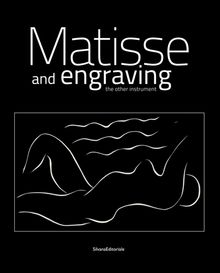 Henri Matisse: Matisse and Engraving
Henri Matisse: Matisse and Engraving
The Other Instrument
Published by Silvana Editoriale.
Edited with text by Patrice Deparpe. Text by Claude Duthit, Cèline Chicha-Castex, Marie-Thèrèse Pulvènis de Sèligny.
PUBLISHER
Silvana Editoriale
BOOK FORMAT
Paperback, 9.5 x 11 in. / 256 pgs / 259 color.
PUBLISHING STATUS
Pub Date 4/26/2016
Active
DISTRIBUTION
D.A.P. Exclusive
Catalog: SPRING 2016 p. 163
PRODUCT DETAILS
ISBN 9788836632459 TRADE
List Price: $45.00 CAD $60.00
AVAILABILITY
In stock
in stock $45.00 Free Shipping UPS GROUND IN THE CONTINENTAL U.S. |
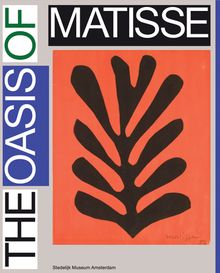 Henri Matisse: The Oasis of Matisse
Henri Matisse: The Oasis of Matisse
Published by Koenig Books.
Foreword by Beatrix Ruf. Introduction by Bart Rutten, Geurt Imanse. Text by Patrice Deparpe, Maurice Rummens.
At the heart of the exhibition is one of the most beloved works in the Stedelijk's collection: the monumental paper cut-out "The Parakeet and the Mermaid" (1952-53), presented with other Matisse cut-outs and rarely exhibited works in fabric and stained glass inspired by them. Arranged chronologically, the volume guides readers through Matisse's days in Paris, the birth of Fauvism, his representational work made in Nice, through to his work in Polynesia and Oceania.
The Oasis of Matisse portrays the artist's output using contextualization with works by his contemporaries, offering a comprehensive overview of his influences.
One of modern art's towering figures, Henri Matisse (1869-1954) was a painter, draftsman, sculptor and printmaker before turning to paper cut-outs in the 1940s. From the clashing hues of his Fauvist works made in the South of France in 1904-5, to the harmonies of his Nice interiors from the 1920s, to this brilliant final chapter, Matisse followed a career-long path that he described as "construction by means of color."
PUBLISHER
Koenig Books
BOOK FORMAT
Hardcover, 8.5 x 10 in. / 288 pgs / 240 color.
PUBLISHING STATUS
Pub Date 7/28/2015
Out of stock indefinitely
DISTRIBUTION
D.A.P. Exclusive
Catalog: FALL 2015 p. 39
PRODUCT DETAILS
ISBN 9783863357269 TRADE
List Price: $65.00 CAD $87.00
AVAILABILITY
Not available
STATUS: Out of stock indefinitely. |
 Henri Matisse: The Cut-Outs
Henri Matisse: The Cut-Outs
Published by The Museum of Modern Art, New York.
Edited by Karl Buchberg, Nicholas Cullinan, Jodi Hauptman. Contributions by Samantha Friedman, Flavia Frigeri, Markus Gross, Stephan Lohrengel.
One of modern art’s towering figures, Henri Matisse (1869–1954) was a painter, draftsman, sculptor and printmaker before turning to paper cut-outs in the 1940s. From the clashing hues of his Fauvist works made in the South of France in 1904–05, to the harmonies of his Nice interiors from the 1920s, to this brilliant final chapter, Matisse followed a career-long path that he described as "construction by means of color."
Karl Buchberg is Senior Conservator at The Museum of Modern Art.
Nicholas Cullinan is Director of the National Portrait Gallery in London.
Jodi Hauptman is a Senior Curator at The Museum of Modern Art.
Samantha Friedman is an assistant curator of the Department of Drawings and Prints at The Museum of Modern Art.
Flavia Frigeri is an assistant curator at Tate Modern in London; she is the organizing curator for Tate’s Young Patrons.
Nicholas Serota is director of Tate Modern's art museums and galleries.
PUBLISHER
The Museum of Modern Art, New York
BOOK FORMAT
Hardcover, 9 x 10.5 in. / 302 pgs / 250 color.
PUBLISHING STATUS
Pub Date 5/31/2014
Active
DISTRIBUTION
D.A.P. Exclusive
Catalog: SPRING 2014 p. 20
PRODUCT DETAILS
ISBN 9780870709159 TRADE
List Price: $65.00 CAD $95.00
AVAILABILITY
In stock
in stock $65.00 Free Shipping UPS GROUND IN THE CONTINENTAL U.S. |
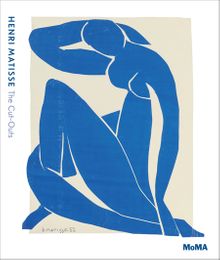 Henri Matisse: The Cut-Outs
Henri Matisse: The Cut-Outs
Published by The Museum of Modern Art, New York.
Edited by Karl Buchberg, Nicholas Cullinan, Jodi Hauptman. Text by Samantha Friedman, Flavia Frigeri, Markus Gross, Stephan Lohrengel, Nicholas Serota.
One of modern art's towering figures, Henri Matisse (1869-1954) was a painter, draftsman, sculptor and printmaker before turning to paper cut-outs in the 1940s. From the clashing hues of his Fauvist works, made in the South of France in 1904-5, to the harmonies of his Nice interiors from the 1920s to this brilliant final chapter, Matisse's career followed a path that he described as "construction by means of color."
Jodi Hauptman is a Curator in the Department of Drawings & Prints at The Museum of Modern Art, New York.
Karl Buchberg is a Senior Conservator at The Museum of Modern Art, New York.
Samantha Friedman is an Assistant Curator in the Department of Drawings & Prints at MoMA.
Nicholas Cullinan is the Curator of Modern and Contemporary Art at the Metropolitan Museum of Art.
PUBLISHER
The Museum of Modern Art, New York
BOOK FORMAT
Paperback, 9 x 10.5 in. / 300 pgs / 314 color.
PUBLISHING STATUS
Pub Date 10/31/2014
Out of stock indefinitely
DISTRIBUTION
D.A.P. Exclusive
Catalog: FALL 2014 p. 84
PRODUCT DETAILS
ISBN 9780870709487 TRADE
List Price: $45.00 CAD $60.00
AVAILABILITY
Not available
STATUS: Out of stock indefinitely. |
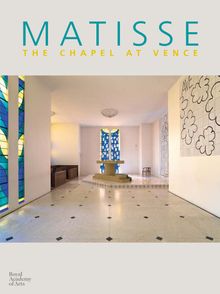 Matisse: The Chapel at Vence
Matisse: The Chapel at Vence
Published by Royal Academy Publications.
Text by Marie-Thèrèse Pulvènis De Sèligny.
Praise for Matisse: The Chapel at Vence
"Includes a wealth of sketches and models ... tells us much about Matisse's process. . . . The images sing with colour" -- Architectural Review November 2013
Marie-Therese Pulvenis de Seligny has been curator of the Musee Matisse since 1997 and has organized numerous exhibitions and written extensively on the artist.
PUBLISHER
Royal Academy Publications
BOOK FORMAT
Cloth, 10 x 13.25 in. / 224 pgs / illustrated throughout.
PUBLISHING STATUS
Pub Date 12/10/2013
Active
DISTRIBUTION
D.A.P. Exclusive
Catalog: Publisher Backlist
PRODUCT DETAILS
ISBN 9781907533600 TRADE
List Price: $55.00 CAD $72.50
AVAILABILITY
Out of stock
STATUS: Out of stock Temporarily out of stock pending additional inventory. |
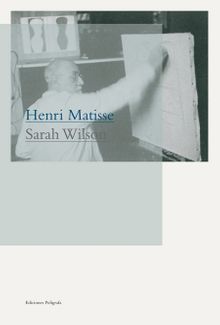 Henri Matisse
Henri Matisse
Published by Ediciones Polígrafa.
Text by Sarah Wilson.
PUBLISHER
Ediciones Polígrafa
BOOK FORMAT
Hardcover, 7.75 x 11.25 in. / 96 pgs / 72 color.
PUBLISHING STATUS
Pub Date 2/28/2010
Out of print
DISTRIBUTION
D.A.P. Exclusive
Catalog: FALL 2009 p. 99
PRODUCT DETAILS
ISBN 9788434312197 TRADE
List Price: $25.00 CAD $30.00
AVAILABILITY
Not available
STATUS: Out of print | 00/00/00 For assistance locating a copy, please see our list of recommended out of print specialists |
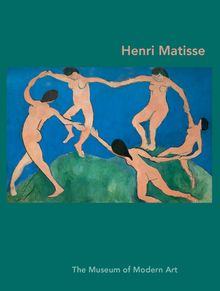 Henri Matisse
Henri Matisse
Published by The Museum of Modern Art, New York.
Text by Carolyn Lanchner
PUBLISHER
The Museum of Modern Art, New York
BOOK FORMAT
Paperback, 6 x 8 in. / 48 pgs / 30 color.
PUBLISHING STATUS
Pub Date 6/1/2008
Active
DISTRIBUTION
D.A.P. Exclusive
Catalog: SPRING 2008 p. 46
PRODUCT DETAILS
ISBN 9780870707247 TRADE
List Price: $9.95 CAD $12.50
AVAILABILITY
In stock
in stock $9.95 Free Shipping UPS GROUND IN THE CONTINENTAL U.S. |
 Henri Matisse: Traits Essentiels
Henri Matisse: Traits Essentiels
Monotypes 1906-1952
Published by Walther König, Köln.
Text by Christophe Cherix, Mayte Julliard.
PUBLISHER
Walther König, Köln
BOOK FORMAT
Paperback, 6.75 x 9.5 in. / 152 pgs / 80 color.
PUBLISHING STATUS
Pub Date 3/1/2007
Out of print
DISTRIBUTION
D.A.P. Exclusive
Catalog: SPRING 2007 p. 54
PRODUCT DETAILS
ISBN 9782830602333 TRADE
List Price: $36.00 CAD $45.00
AVAILABILITY
Not available
STATUS: Out of print | 5/18/2011 For assistance locating a copy, please see our list of recommended out of print specialists |
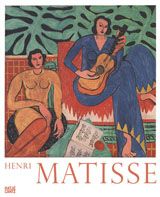 Henri Matisse: Figure Color Space
Henri Matisse: Figure Color Space
Published by Hatje Cantz.
Edited by Pia Müller-Tamm. Essays by Gottfried Böhm, Stefan Grohé, Peter Kropmanns, Rémi Labrusse, Isabelle Monod-Fontaine, Maria Müller, Margret Stuffmann, Beate Süntgen and Katharina Sykora.
PUBLISHER
Hatje Cantz
BOOK FORMAT
Clothbound, 9.75 x 12 in. / 384 pgs / 200 color / 40 bw.
PUBLISHING STATUS
Pub Date 2/1/2006
Out of print
DISTRIBUTION
D.A.P. Exclusive
Catalog: SPRING 2006 p. 4
PRODUCT DETAILS
ISBN 9783775716017 TRADE
List Price: $65.00 CAD $75.00
AVAILABILITY
Not available
STATUS: Out of print | 11/28/2010 For assistance locating a copy, please see our list of recommended out of print specialists |
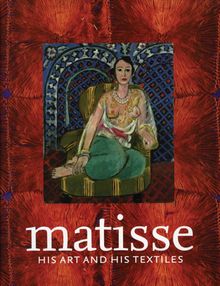 Matisse Textiles
Matisse Textiles
Published by Royal Academy Publications.
By Henri Matisse.
PUBLISHER
Royal Academy Publications
BOOK FORMAT
Cloth, 10 x 11 / 212 pgs / Illustrated throughout
PUBLISHING STATUS
Pub Date 3/1/2005
Out of print
DISTRIBUTION
D.A.P. Exclusive
Catalog: Publisher Backlist
PRODUCT DETAILS
ISBN 9781903973462 TRADE
List Price: $65.00 CAD $95.00
AVAILABILITY
Not available
STATUS: Out of print | 00/00/00 For assistance locating a copy, please see our list of recommended out of print specialists |
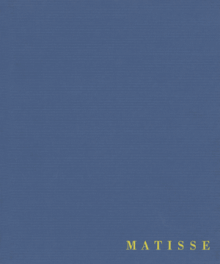 Henri Matisse: Zeichnungen Und Gouaches
Henri Matisse: Zeichnungen Und Gouaches
Published by Hatje Cantz.
Artwork by Henri Matisse. Contributions by Lydia Delectorskaya, Otrud Dreyer. Text by Jack Flam.
PUBLISHER
Hatje Cantz
BOOK FORMAT
Hardcover, 9.5 x 11.75 in. / 314 pgs / 324 color / 51 bw
PUBLISHING STATUS
Pub Date 11/2/1993
Out of print
DISTRIBUTION
D.A.P. Exclusive
Catalog: UNKNOWN 1990
PRODUCT DETAILS
ISBN 9783775704458 TRADE
List Price: $55.00 CAD $65.00
AVAILABILITY
Not available
STATUS: Out of print | 4/23/2001 For assistance locating a copy, please see our list of recommended out of print specialists |

